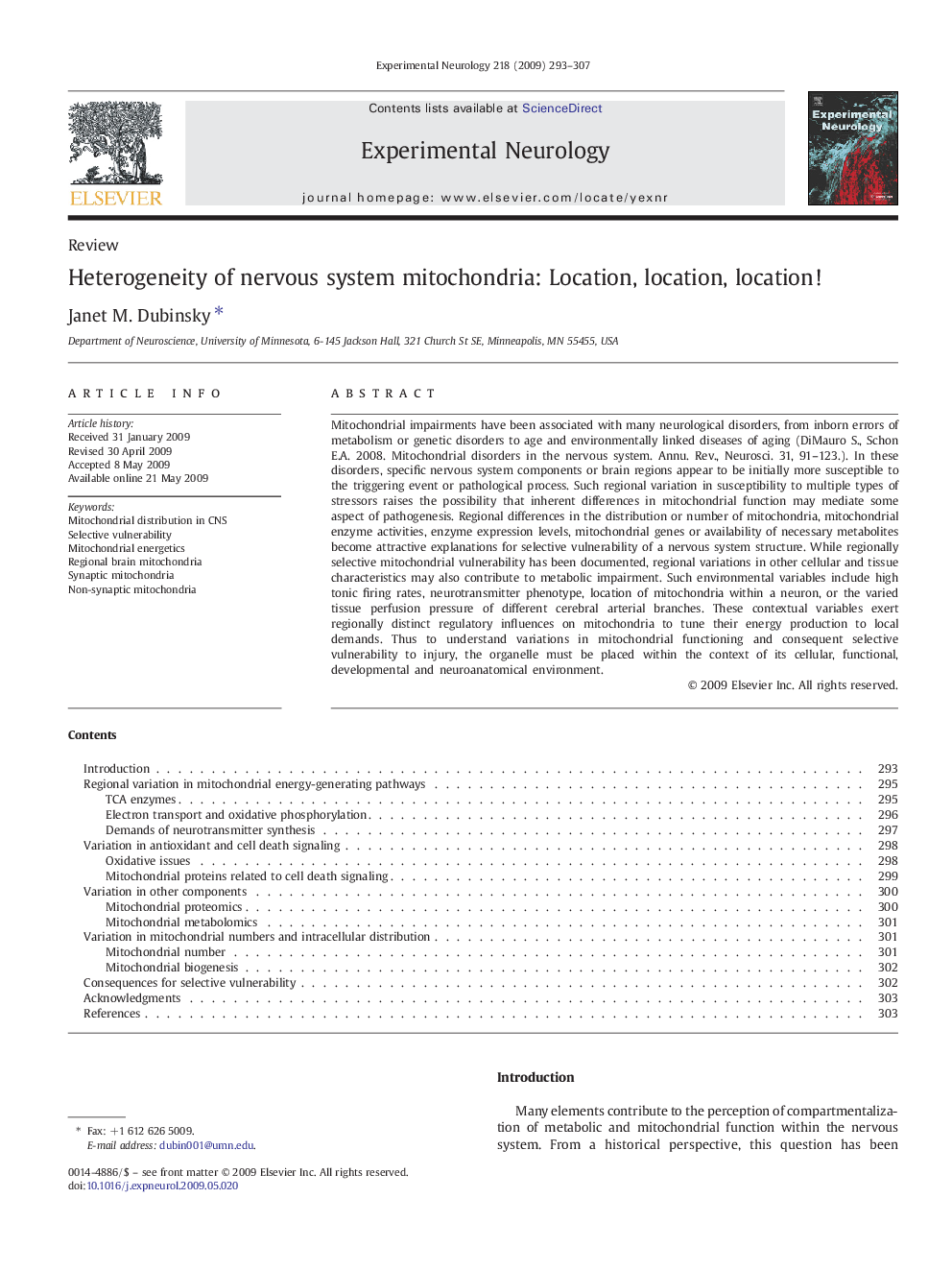| Article ID | Journal | Published Year | Pages | File Type |
|---|---|---|---|---|
| 3056227 | Experimental Neurology | 2009 | 15 Pages |
Mitochondrial impairments have been associated with many neurological disorders, from inborn errors of metabolism or genetic disorders to age and environmentally linked diseases of aging (DiMauro S., Schon E.A. 2008. Mitochondrial disorders in the nervous system. Annu. Rev., Neurosci. 31, 91–123.). In these disorders, specific nervous system components or brain regions appear to be initially more susceptible to the triggering event or pathological process. Such regional variation in susceptibility to multiple types of stressors raises the possibility that inherent differences in mitochondrial function may mediate some aspect of pathogenesis. Regional differences in the distribution or number of mitochondria, mitochondrial enzyme activities, enzyme expression levels, mitochondrial genes or availability of necessary metabolites become attractive explanations for selective vulnerability of a nervous system structure. While regionally selective mitochondrial vulnerability has been documented, regional variations in other cellular and tissue characteristics may also contribute to metabolic impairment. Such environmental variables include high tonic firing rates, neurotransmitter phenotype, location of mitochondria within a neuron, or the varied tissue perfusion pressure of different cerebral arterial branches. These contextual variables exert regionally distinct regulatory influences on mitochondria to tune their energy production to local demands. Thus to understand variations in mitochondrial functioning and consequent selective vulnerability to injury, the organelle must be placed within the context of its cellular, functional, developmental and neuroanatomical environment.
